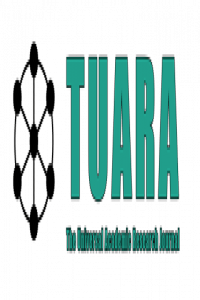Women and Education: The Challenges in Education Process
Women whose education right were taken and have to be students after years face some
difficulties. The most important of these difficulties is that women are married, their
responsibilities increase due to having children, and when they try to be a student with these
responsibilities, they face even more insurmountable situations. There are so many women in
this situation in our country. This study was prepared to shed light on determining what
difficulties these women are experiencing and what can be done to overcome these difficulties.
In the study, 10 women suitable for this situation were reached. The interview technique,
which is one of the qualitative research methods, was used and the questions in the semistructured interview form were asked. The questions are; what they feel when they are left
away from school, education life, what they miss about the school or classroom environment
during their stay away from education, what it means to read and receive education, how they
have made a way in their lives in the period when they are away from education, what
problems they faced when they became a student after a long time were. The data obtained
from the interviews were analyzed with the descriptive analysis method.
Anahtar Kelimeler:
Women, gender, education and women, women
Women and Education: The Challenges in Education Process
Women whose education right were taken and have to be students after years face some
difficulties. The most important of these difficulties is that women are married, their
responsibilities increase due to having children, and when they try to be a student with these
responsibilities, they face even more insurmountable situations. There are so many women in
this situation in our country. This study was prepared to shed light on determining what
difficulties these women are experiencing and what can be done to overcome these difficulties.
In the study, 10 women suitable for this situation were reached. The interview technique,
which is one of the qualitative research methods, was used and the questions in the semistructured interview form were asked. The questions are; what they feel when they are left
away from school, education life, what they miss about the school or classroom environment
during their stay away from education, what it means to read and receive education, how they
have made a way in their lives in the period when they are away from education, what
problems they faced when they became a student after a long time were. The data obtained
from the interviews were analyzed with the descriptive analysis method.
Keywords:
Women, gender, education and women, women,
___
- Adıgüzel, A. (2013). Schooling of girl children barrier and suggestions for solution a case study of Şanlıurfa. Ekev Akademi Dergisi, 17(56), 325-344.
- Aksu, B. (2008). sivil toplum kuruluşları için toplumsal cinsiyet rehberi. Ankara: Odak Ofset Matbaacılık, s.15, 22, 35-45
- Alpaydın, Y. (2008). Türkiye’de yoksulluk ve eğitim ilişkileri. İlem Yıllık, 3 (3), 49-64.
- Arat, N. (1999). Kadınların insan hakları. Kadın Araştırmaları Dergisi, 5, 5-10.
- Arat, N. (1996a). Türkiye'de kadın olmak. İstanbul: Say Yayınları, 17-19.
- Arat, N. (1996b). Kadın gerçeklikleri. İstanbul: Say Yayınları, 3-5.
- Arslan, Ş. A. (2000). Ders kitaplarında cinsiyetçilik. KSSGM Yayım. Ankara.
- Başaran, İ. E. (1996). Eğitim yönetimi. Ankara: Yargıcı Matbaası.
- Demirbilek, S. (2007). Cinsiyet ayrımcılığın sosyolojik açıdan incelenmesi. Finans Politik & Ekonomik Yorumlar Dergisi, 44, 45-49.
- Eren, A. (2005). Fear culture, values culture, violence. Aile ve Toplum, Eğitim-Kültür ve Araştırma Dergisi, 2 (8), 23-37.
- Güldü, Ö., ve Ersoy, M. K. (2008). Gender roles and political attitudes: A social psychological evaluation. Ankara Üniversitesi SBF Dergisi, 64 (3), 97-117.
- Hablemitoğlu, Ş. (2005). Toplumsal cinsiyet yazıları. İstanbul: Toplumsal Dönüşüm Yayınları,İkinci Baskı, 20-40.
- Kahraman, S. (2010). Determination of the opinions of women against social gender ınequality. DEUHYO ED, 3(1), 30-35.
- Köse, M. (2016). A comparison of girls' schooling problem between the years 1942 and 1962 with current girls' schooling problem in Turkey. Bartin University Journal of Faculty of Education, 5 (1), 34-53.
- Markham, U. (1999). Baskı altındaki kadın. Birinci Basım, Ankara, ALFA Basım Yayım Dağıtım.
- Özaydınlık, K. (2014). Women in Turkey on the basis of gender and education. Sosyal Politika Çalışmaları Dergisi, 33, 93-112.
- Özgen, Ö. & Ufuk, H. (2001). Kırsal kesimde kadın eğitimi. Türkiye Ziraat Mühendisliği Teknik Kongresi, Ankara. 1050-1063.
- Parlaktuna, İ. (2010). Analysis of gender-based occupational discrimination in Turkey. Ege Academic Review, 4 (10), 1217-1230.
- Sayılan,F. (2012). Gender and education. Ankara, Turkey.
- Seven, M. A. ve Engin, A. O. (2007). Türkiye’de kadın eğitimi alanındaki eşitsizlikler. Atatürk Üniversitesi Sosyal Bilimler Enstitüsü Dergisi, 1 (9), 177-188.
- Türmen, T. (1995). Toplumsal cinsiyet ve kadın sağlığı. Un. Platform For Action.
- Yıldırım ,C., Beltekin, N. & Oral ,T. (2018). Increasing school attedance and schooling rates for girls: persuasion process. e-Şarkiyat İlmi Araştırmalar Dergisi/Journal of Oriental Scientific Research (JOSR), 10 (2 ),783- -804
- ISSN: 2717-9133
- Başlangıç: 2019
- Yayıncı: Necmettin Erbakan Üniversitesi
Sayıdaki Diğer Makaleler
Resources for ELLs in International Schools: A Non-profit and Forprofit Comparison
Women and Education: The Challenges in Education Process
Adamu Chidubem DEBORAH, Babatimehin TEMİTOPE, Adeoye OLUSEYİ PETER
Difficulties in Achieving the Goals of Secondary Religious Culture and Moral Knowledge Course
